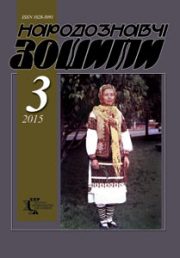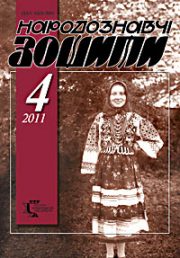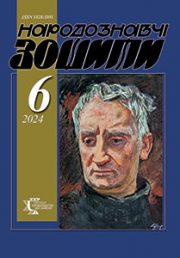The Ethnology Notebooks. 2022. № 1 (163), 176—182
UDK [398.54:398.332.416](477.87)
DOI https://doi.org/10.15407/nz2022.01.176
SHEPHERDS’ «BETHLEHEM» GAMES OF UKRAINIANS IN TRANSCARPATHIA
KUROCHKIN Oleksandr
- ORCID: https://orcid.org/0000-0002-3365-7266
- Doctor of Historical Sciences,
- Professor, Senior Research Fellow,
- M.T. Rylsky Institute of Art Studies, Folklore and Ethnology
- of the National Academy of Sciences of Ukraine,
- «Ukrainian Ethnological Center» Department,
- M. Hrushevskoho Street, 4, 01001, Kyiv, Ukraine,
- Contacts: e-mail: olexkuro@gmail.com
Abstract. When exploring all horizons and segments of the cultural history of the Ukrainian people, it is important to pay attention to the areas of preservation of archaic traditions. One of such areas is Transcarpathia, which lies in the strip of ethnocultural border between Ukrainians and Poles, Slovaks, Hungarians, Eastern Romans. This study is focused on relict folk games of Ukrainians in Transcarpathia known as the Christmas nativity scene or «Bethlehem» when using the Hungarian style. A figurative image of the Gospel legend of the birth of Jesus Christ in Bethlehem lies at the heart of the ritual. The Christmas games including the nativity scene had historical predecessors represented by the ancient Christmas carols of a magical nature that contained wishes of happiness and prosperity.
This study has formulated the principal task of introducing previously unpublished materials about the Christmas rites of Ukrainians in Transcarpathia into scientific circulation; the materials mentioned were collected by correspondents of the Subcarpathian Rus society in the 20—30s of the twentieth century. To examine into such complex objects of scientific knowledge as Christmas rituals and folklore, it is necessary to integrate a holistic system of methods and special research approaches: genetic, typological, historical, comparative, and others. Having analyzed the variants of the «Bethlehem» game from different settlements of Transcarpathia, we concluded that they testified to a rather stable scenario of ritual tradition. According to local circumstances, the cast of the Christmas play varied. The religious shell of the monologues and dialogs of the «Bethlehem» participants makes it possible to see the life reality, the characteristic details of the shepherds’ life and husbandry of Ukrainian mountaineers.
From the Middle Ages, many peoples of the Roman Catholic faith have known dramatic Christmas games based on the Gospel legend of the birth of Jesus Christ with the participation of various domestic characters. During the Enlightenment, those games were almost completely forgotten in Western Europe, while on the periphery of the Catholic world, in particular in Transcarpathia, they survived to the twentieth century.
Keywords: Transcarpathia, Christmas, puppet and «living» nativity scene, Bethlehem, Angels, Shepherds, national theater.
Received 20.01.2022
REFERENCES
- Tolstoy, N.I. (1977). On the ratio of the central and marginal areas in modern Slavia. Areal research in linguistics and ethnography (P. 37—56). Leningrad: Nauka [in Russian].
- Toporov, V.N. (1992). Sheep. Myths of the peoples of the world. Encyclopedia (Vol. II).Moscow: Soviet encyclopedia [in Russian].
- Tyvodar, M. (1994). Traditional cattle breeding in the Ukrainian Carpathians of the second half of the 19th — first half of the 20th century: historical and ethnological research. Uzhhorod: Karpaty [in Ukrainian].
- Khlanta, I.V., & Ofitsynskyi, R.A. (1995). Transcarpathian nativity scene. Uzhhorod: Zakarpattia [in Ukrainian].
- Chicherov, V.I. (1957). The winter period of the Russian agricultural calendar of the 16th—19th centuries: essays on the history of folk beliefs. Moscow: Publishing House of the Academy of Sciences of the USSR [in Russian].
- (1983). Boykivshchyna: historical and ethnographic research. Kyiv: Naukova dumka [in Ukrainian].
- Volytska, I.V. (1992). Theatrical elements in the traditional rituals of the Ukrainians of the Carpathians of the late 19th — early 20th century. Kyiv: Naukova dumka [in Ukrainian].






